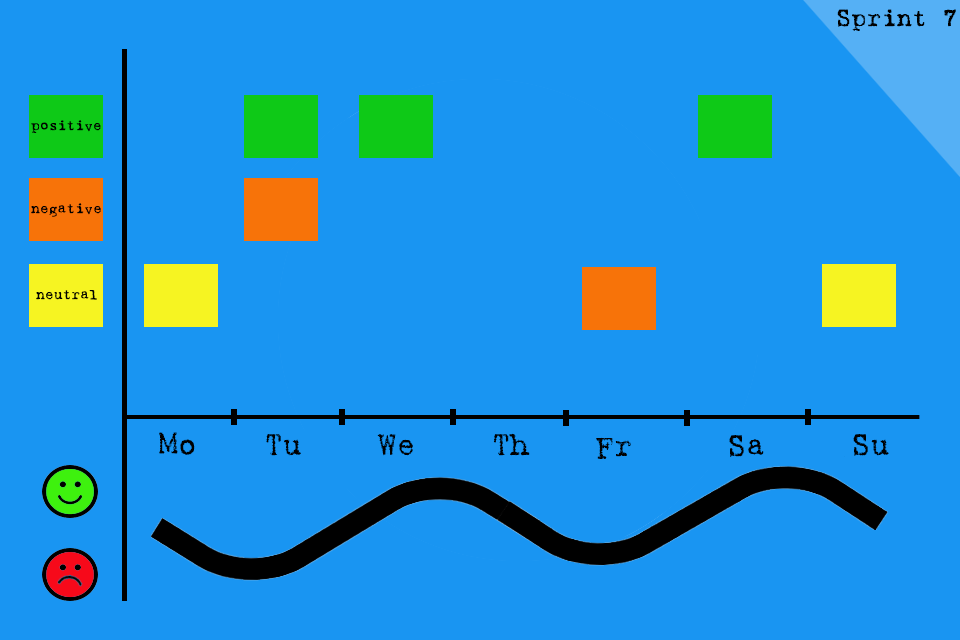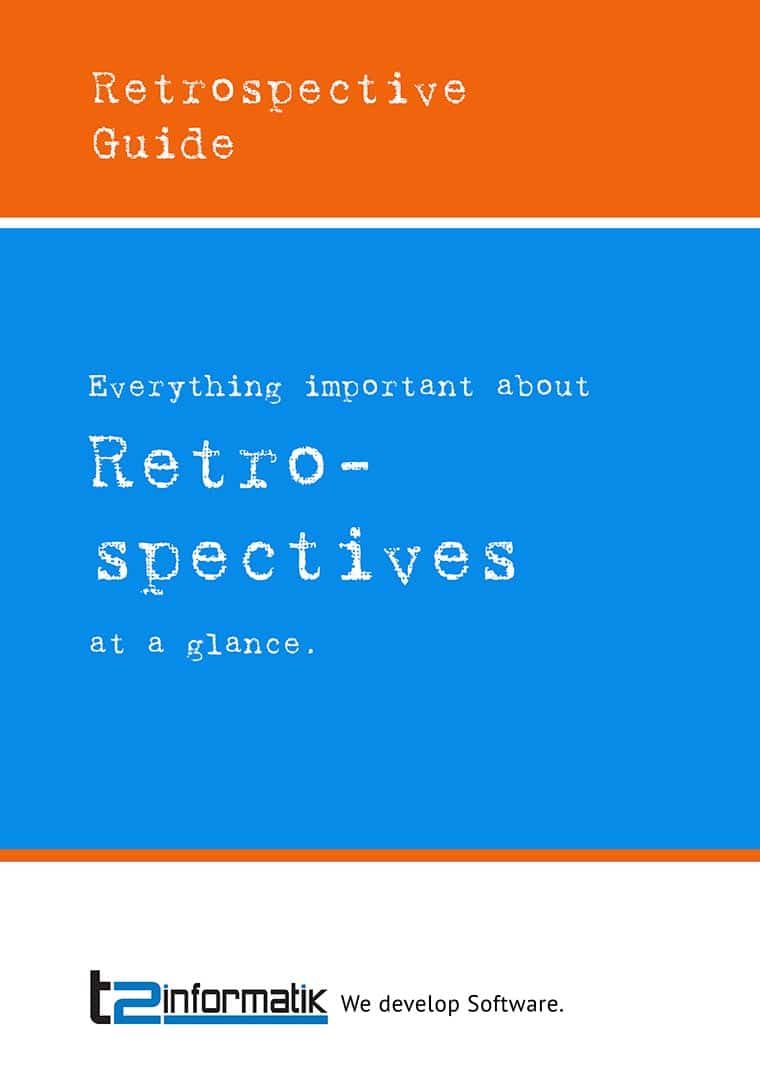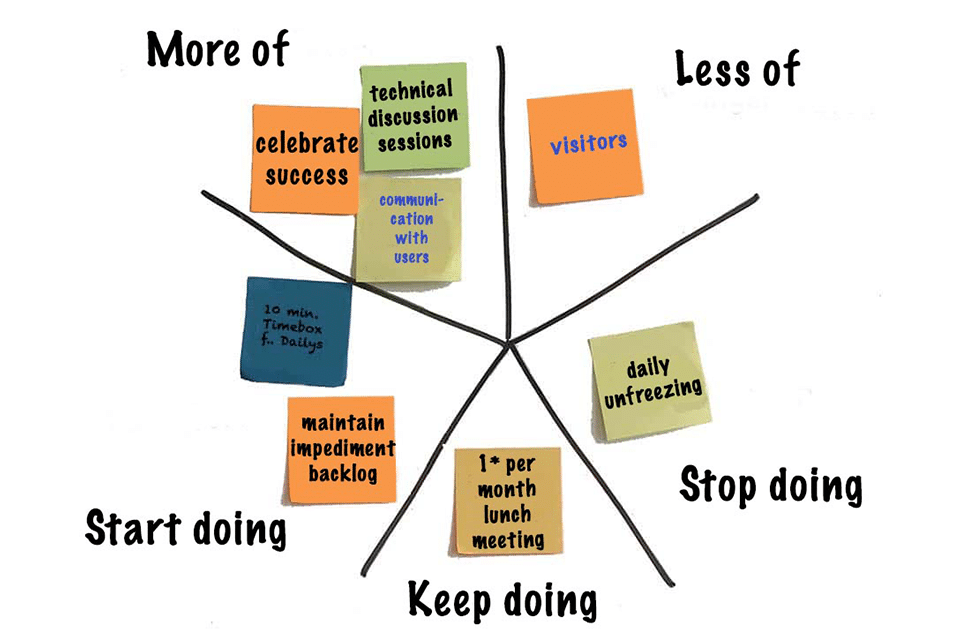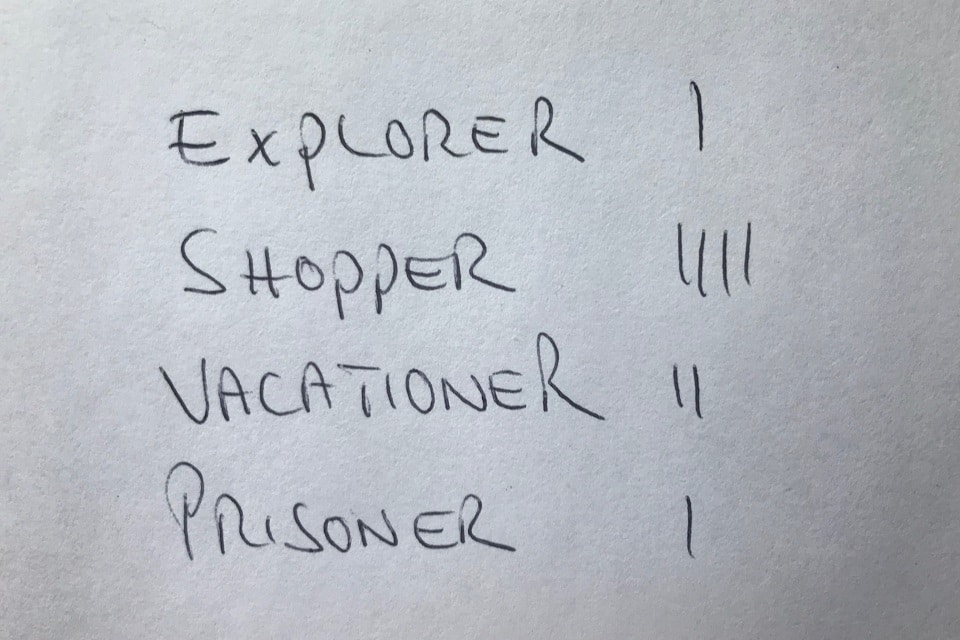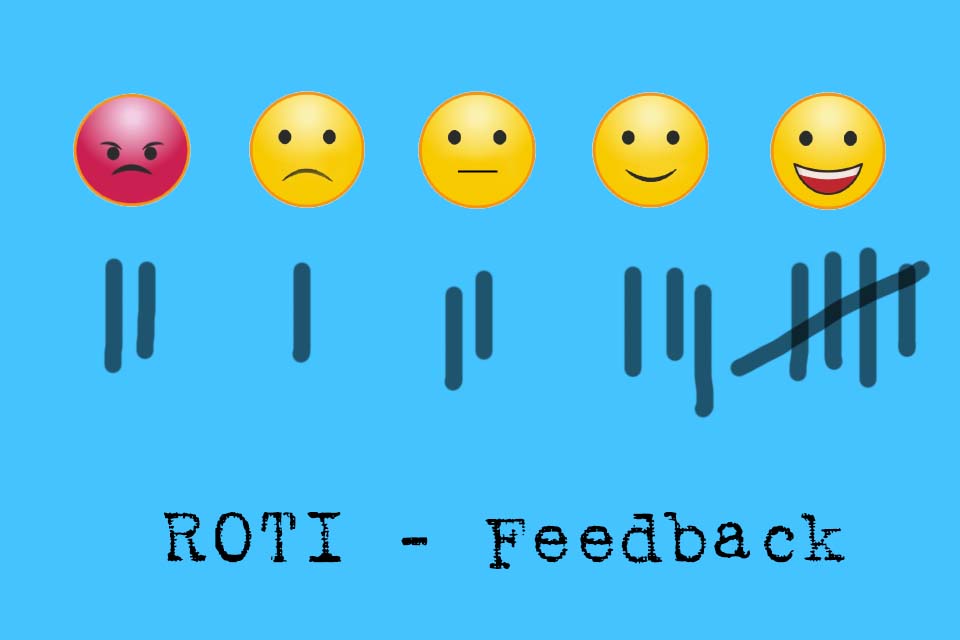What is a Timeline Retrospective?
Timeline Retrospective – Events and Moods Over Time
A Timeline Retrospective is a special form of retrospective. Like practically all common retrospective formats, it attempts to identify positive and negative aspects of cooperation between participants. What makes it special is the visualisation of events on a timeline. Events are things that happen during a time interval (usually a sprint) and impact collaboration.
In addition to the events, the mood of each team member is recorded in a Timeline Retrospective. Interestingly, the mood in the team often corresponds to the positive or negative expression of events. The visualisation is followed by a discussion in the team about insights from the time interval and measures to improve future cooperation.
Through visualisation, the Timeline Retrospective can be used as a supplement to common formats such as the Start-Stop, the 3S, the 4L or the Starfish Retrospective, or as an alternative.
The Process of a Timeline Retrospective
The process of a Timeline Retrospective is relatively simple, but differs depending on the variant used. All variants have the following elements in common:
- Basically, all those actively involved or contributing to a development take part, i.e. in Scrum all developers, the Product Owner and the Scrum Master.
- There should be clarity in advance about the time interval to be discussed. In most cases, this will be the current Sprint. The time interval is visualised exactly to the day on a timeline.
- A facilitator is needed. In agile projects this is often the Scrum Master, in classic projects the Project Manager. The facilitator explains the procedure and moderates the process.
- As with all retrospectives, the Vegas Rule (“What happens in Vegas, stays in Vegas”) and the Golden Rule (mutual respect and appreciation) should apply.
- Ideally, participants agree on a timebox for the format in advance and determine who is responsible for compliance.
- Individually, the participants note down events that, from their point of view, had an influence on the cooperation.
Martin Fowler coined the term “sticky timeline”.¹ He recommends the use of coloured stickies: green for “good”, orange for “problematic” and yellow for “neutral” events. The stickies are then placed (usually above) the timeline. - In a second round, the participants express their mood. They use stickies again, e.g. pink for “positive” and blue for “negative” moods. These stickies are also placed (usually below) the timeline.
- This is followed by a joint discussion about the events and the search for insights for future time intervals.
The variations of the Timeline Retrospective result from the diversity of the visualisation. For example, it is conceivable
- to use the timeline as a kind of “divider”. The events are placed above the timeline, the moods below.
- that the stickies for events and moods differ in shape (square and round). As a result, each participant could express his/her mood about a square event with a round sticky directly on the event. A “division” into above/below would thus be unnecessary.
to represent more than just two moods. Happiness, satisfaction, neutrality, concern, disappointment and anger would be conceivable. - to define areas for Indiviudals, Interactions, Processes, Tools and Definition of Done, so that events (and possibly also the moods) can be assigned to the areas.
- to do without colour coding of moods or emotions, but position one point per participant and day in a + or + section below the timeline. This makes it possible to draw individual mood curves for each participant as well as to visualise the mood of the team (as a median, so to speak).
Advantages and Disadvantages of the Timeline Retrospective
The Timeline Retrospective offers some obvious advantages:
- The process and implementation is simple and intuitive and differs significantly from many other formats.
- The visualisation can be easily adapted to desired variations.
- The polling of moods adds a special touch to the exchange about teamwork. If it is possible to improve the mood in the team, work performance can also be increased, as a study confirms.²
- For many participants, dealing with emotions offers the opportunity for self-reflection.
- It stimulates communication in the team.
- The retrospective is suitable for different intervals, e.g. for a sprint, several iterations or a project. At the same time, the presentation can be “updated” and the timeline can be extended step by step.
- The colour coding of events and/or moods and possible mood curves quickly give an impression of the cooperation in the team.
Where there are advantages, there are of course also some disadvantages:
- Many people do not feel like talking about their moods or emotions. This can be a sign of a lack of trust, but it does not have to be. Forcing participants to document moods here can easily lead to a documented negative mood.
- The longer the time interval, the more difficult it is to determine events and moods precisely. With a sprint duration of one week, it may still be possible to associate an event with a specific day. With a sprint duration of 4 weeks, however, this should be much more difficult, if not almost impossible. And with a recap of an entire project, the findings are likely to be similarly “inaccurate” as with a conventional project review.
- With many events, the presentation quickly becomes confusing. The situation is similar when a mood curve is drawn for each participant.
- The exchange about events and especially moods can quickly take up a lot of time. If the Timeline Retrospective is a supplement to another format, such as Small Starfish, the time required increases accordingly.
A final thought: since the format is variable, it can also be used as an element in the Daily Scrum and as input for the upcoming retrospective. Just give it a try.
Impulse to discuss:
How important is it to try different retro formats or change formats?
Notes:
[1] Sticky Timeline
[2] Oswald, A. J./ Proto, E./ Sgroi, D. (2009): Happiness and Productivity, IZA DP No. 4645, Institute for the Study of Labor
Here you will find additional information from our Smartpedia section:
